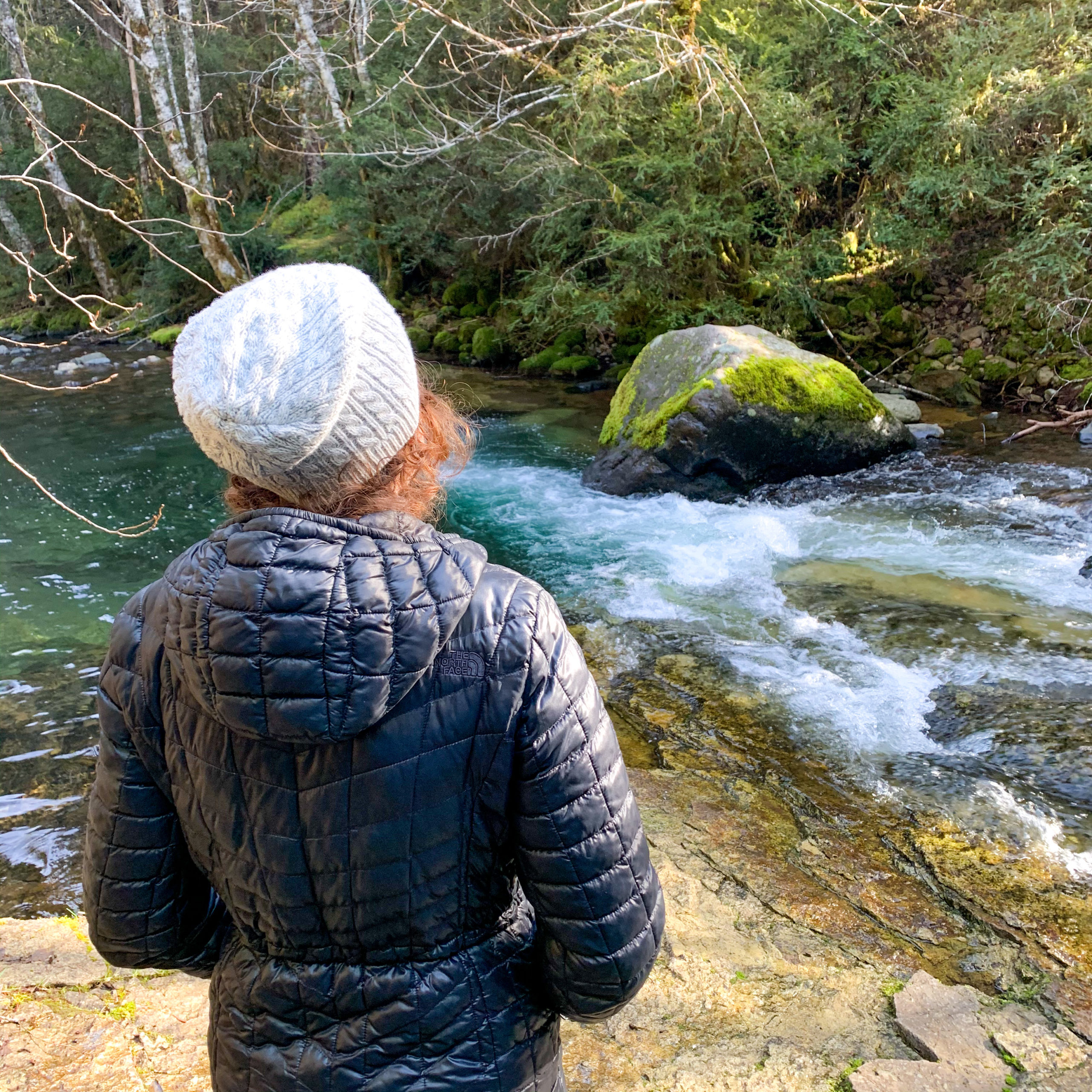I spent most of my teens and 20s trying to close off my heart.
I wanted to become impervious to the pain of the world and to my own.
Hard, impenetrable, and strong. Not soft, weak, and tender like I’d felt my whole life.
I fantasized about what a welcome relief it would be to feel less.
I was “too sensitive” for most people and was encouraged to push my feelings away, pull myself up by my bootstraps and soldier through, like anyone else with common sense. I’m sure I’m not alone in this life experience.
It comes as no surprise that this method never worked and I tortured myself for failing to conquer my vulnerability with excessive exercise, obsessive calorie counting and eating disorders, and such perfectionism in all areas of my life that I could never live up to my own expectations.
I felt disempowered, guilty, and alone.
I knew no other way to exist outside of striving for stoicism and championing an immune attitude toward grief and struggle.
I was determined to banish my internal fragility that caused so much pain, shame, and isolation.
Only in naturopathic medical school did I begin to understand another way of being in the world and this realization came to light in a very unexpected way.
The summer after my first year I took an elective course called craniosacral therapy.
To be honest, I barely knew what it was. I’d only heard of it a few months prior and had gathered that it was a gentle form of bodywork that seemed to involve intuition and a bit of mysticism.
During my first year as I learned about the history of naturopathic medicine, the namesake of my school, Dr. John Bastyr, was quoted as saying, “always touch your patient.”
This was an aha moment for me; it resonated to the marrow of my bones even though I’d never had a massage.
We as naturopaths are meant to reconnect people with their bodies in their journey toward better health. How can we do this without employing the healing power of touch?
Much can be discussed and observed on an intellectual level and progress can be made. But if we don’t know how to listen to the body itself, what kind of insights and healing are we leaving on the table?
So I signed up for craniosacral therapy to dive into the woo-woo side of naturopathic medicine. I was skeptical, but I had the feeling that something important for me lay in a different understanding of the body.
To my utter amazement, craniosacral therapy was not woo-woo at all. We dove heavily into anatomy in the first class and it fundamentally reshaped how I thought about the body.
My first year anatomy coursework had taught me that the many bones in your skull are fused together, solidly fixed in their position.
In craniosacral therapy, I learned that all of the bones in your head move in their own pattern and rhythm. In fact, the entire first two courses in the series were built around learning to feel the specific movement paths of each bone in the head.
Mind = blown.
The craniosacral rhythm was another head shaking moment for me: the absorption and production of your cerebral spinal fluid is like a pulse and you can feel it throughout the entire body. Assessing it and balancing it benefits the nervous system and whole body.
My inner skeptic stopped sounding alarm bells when after months of practice I could consistently feel the rhythm and movement patterns of the bones and tissues. I started to use it on patients at school and saw immediate effects, including completely quieting one man’s severe tremors from Parkinson’s disease by the time he got off the table.
I now use craniosacral therapy daily in my practice and it continues to support and nourish many of my patients. Having a profound yet gentle tool to help people hasn’t proven to be the most impactful part of learning this way of listening to the body.
Practicing craniosacral therapy has unequivocally convinced me that softness and fluidity represent health and strength. If I ever doubt it, this idea is reinforced every single time I touch a patient.
Where there is pain or trauma in the body, there is restriction. Tissues stop moving in their natural pattern, most often in an attempt to create stability for the injured area.
If this disruption is not addressed, the body does what it does best: adapt. It learns to work around the immobilized area. Sometimes that work around is painless and we never know; other times we get pounding headaches, sciatica, or can’t express our grief.
Each time we adapt around a hardness that we haven’t addressed, we compromise our ability to function and over time, our ability to heal.
I see this in my patients’ physical bodies, yes, but most people don’t realize that this blockage readily translates to their mental and emotional state as well.
Shut down and stiffness begins to become normal. Hearts close. Minds close.
Hardness and rigidity can feel like strength. They create a sense of safety and control which is a welcome relief if you’re used to feeling vulnerable. They make our options for existence less overwhelming by closing off other ways of being and experiencing the world.
But hardness is an empty shell and an illusion. Inside that shell is a void of potential space that could be home to our real selves if we allowed our toughness to soften.
You are not granite. You are not static and mechanical like a car that runs until parts wear out and need to be replaced.
You are flexible, organic, adaptable, self-healing, and dynamic.
Even your bones are not rigid. They respond to their environment and shift or flex based on what the body needs.
Every tissue inside of you is breathing and moving in a way that supports your whole being. This softness is strength. Through it you can hold and receive experiences instead of having them bounce off of you like you’re a brick wall.
By being receptive we allow ourselves the space to move out of reactivity and into heartfelt response. We open ourselves to new opportunities for growth, healing, love, and joy and we leave behind judgment, defensiveness, and the myth that we’re separate from everything else.
I feel the reality of this unfolding each time I practice craniosacral therapy on a patient. I feel a rush of heat and the stiffness in their body melt away. I hear their breathing soften. I feel their heart open and their vitality start to return.
It’s my job to remind my patients to find ways to return to softness and allow it to flourish within them. It’s not easy to learn to embrace the vulnerability of what it means to be soft in a culture that values the false power of rigidity and blunted emotions.
I can say from personal experience that it’s scary to release the feeling of stability inherent to hardness. I held on for years and still have work to do.
Slowly, after working with the bodies of my patients day in and day out, I trusted the truth I had observed countless times: health lies in tenderness and softness. We may feel more vulnerable in this state, but we’re much stronger when we embrace our vulnerability than when we deny and suppress it.
With that softness comes the rewards of a broken open heart: compassion, connection, and a depth of feeling and experience that’s impossible to achieve if you’re stunted by shut down.
I will always be grateful to my patients who continue to teach me the wisdom of this way of being. Hardness and rigidity are not life-giving endeavors; they drain away our vitality as we try to compensate around something we’re unwilling to examine.
Learn to trust the softness and watch your fear thaw. Look on softness with the fresh perspective of measuring your true strength through flexibility and tenderness. Know that your body fundamentally understands and accepts this truth even if your mind hasn’t quite reconciled it.
If you’ve been living from a hardened, disconnected place, don’t worry. It only takes an instant to shift into softness when you acknowledge its value and begin the process of unearthing whatever you’ve been avoiding.
No matter where you are in life, you can choose to live in wild, free, reckless softness with your heart on your sleeve and your life full of joy, heartache, and possibility.




